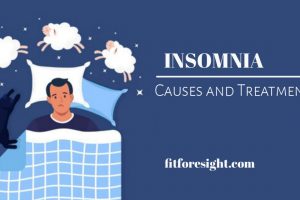Migraine is a condition that affects millions of individuals worldwide, and yet it remains a perplexing enigma in the world of medicine. These debilitating headaches not only cause excruciating pain but also disrupt daily life for those who suffer from them. In this article, we will delve into the complexities of migraines, exploring their causes, symptoms, and the most suitable treatment options available.A migraine is more than just a severe headache; it’s a neurological disorder characterized by recurrent, throbbing headaches typically affecting one side of the head. Unlike common headaches, migraines come with a host of additional symptoms, such as nausea, vomiting, sensitivity to light and sound, and visual disturbances.
Migraine Triggers
While the exact cause of migraines is still a subject of research, several triggers are known to set off these debilitating episodes. Some common triggers include:
- Dietary Factors: Certain foods and beverages like caffeine, alcohol, chocolate, and aged cheeses can trigger migraines in susceptible individuals.
- Hormonal Changes: Fluctuations in estrogen levels, often seen in women during menstruation, pregnancy, or menopause, can provoke migraines.
- Stress: Emotional stress and anxiety are notorious migraine triggers. Learning stress management techniques can be crucial for migraine sufferers.
- Environmental Factors: Bright lights, loud noises, strong odors, and changes in weather can all contribute to the onset of migraines.
- Sleep Irregularities: Both insufficient sleep and oversleeping can trigger migraines.
- Genetics: Migraines often run in families, suggesting a genetic component.
Migraine Symptoms
The hallmark of a migraine is a severe headache, but it’s essential to recognize the accompanying symptoms. These may include:
- Aura: About one-third of migraine sufferers experience visual disturbances, known as auras, before the headache strikes. Auras can involve flashing lights, zigzag lines, or blind spots.
- Throbbing Pain: Migraine headaches are often described as throbbing or pulsating and can last for hours to days.
- Nausea and Vomiting: Many migraine sufferers experience nausea and vomiting, making it difficult to keep food or medications down.
- Sensitivity to Light and Sound: Bright lights and loud noises can intensify migraine pain.
- Fatigue: Migraines can leave individuals feeling exhausted and drained.
Treatment and Management
Managing migraines often involves a combination of lifestyle changes and medications. Here are some strategies to consider:
- Identify Triggers: Keep a migraine diary to track potential triggers and patterns. This can help you avoid or minimize them.
- Lifestyle Modifications: Incorporate regular exercise, maintain a consistent sleep schedule, and manage stress through relaxation techniques.
- Medications: Depending on the frequency and severity of your migraines, your healthcare provider may prescribe acute or preventive medications.
- Cognitive-Behavioral Therapy: This type of therapy can be beneficial in managing stress and coping with the psychological aspects of migraines.
- Alternative Therapies: Some people find relief through acupuncture, biofeedback, or dietary supplements. Consult with a healthcare professional before trying these options.
Migraines are complex and often mystifying, but understanding their triggers, symptoms, and treatment options is essential for those who suffer from them. By identifying and avoiding triggers, making lifestyle changes, and exploring appropriate medications and therapies, migraine sufferers can regain control over their lives and reduce the frequency and severity of these debilitating headaches. If you’re struggling with migraines, consult a healthcare professional for personalized guidance and support. Remember, you don’t have to face migraines alone, and there are effective ways to manage and mitigate their impact on your life.

























Add Comment